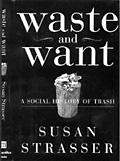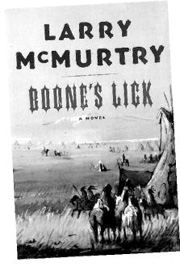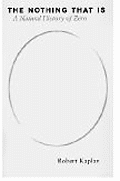I STILL REMEMBER my grandmother darning my boyhood socks and how the imperfectly patched sections (usually on the heel) would scrape my foot, leaving me uncomfortable after just a few hours of wear. I swore then that as an adult I would never resort to fixing frayed footwear. And I never have. But reading Susan Strasser’s surprisingly engaging Waste and Want: A Social History of Trash has made me feel, if not guilty for my abject thriftlessness, at least more appreciative of the lengths to which my grandmother and others before her went to maintain and reuse their hard-earned possessions.
Waste and Want: A Social History of Trash By Susan Strasser (Metropolitan Books, $27.50)
Strasser can trace the roots of today’s “throwaway culture” back only to the late 19th century, when “the growth of markets for new products came to depend in part on the continuous disposal of old things.” Before then, America had boasted of recycling systems much more arcane than those with which we’re now familiar. Rag pickers roamed city streets, collecting old fabric for sale to paper mills. “Swill children” went door to door, amassing kitchen refuse as fertilizer or hog food. Secondhand clothing that wasn’t passed down in families or cut up for use in rug making was considered valuable enough to advertise in newspapers. Old barrels and other packing containers were refashioned into household furniture. “Things that could not be used in any other way were burned,” Strasser explains, “especially in the homes of the poor, trash heated rooms and cooked dinners.” Until the 20th century, Americans generated very little of what they considered waste.
HOWEVER, POPULATION growth and urban expansion posed challenges to the hygienic elimination of rubbish. By 1900, America’s street cleaning problem alone was staggering. Fireplace ashes, sewage, horse manure, and dead animals cluttered city roads. In reaction, municipalities passed antidumping ordinances and established strategies for the gathering of recyclable materials. Progressive-era health reformers welcomed this attention to sanitation; but at the same time it altered notions of what was and was not garbage. Manufacturers and retailers contributed to that redefinition, slowly equating the reuse of old goods with poverty. “‘Disposability,'” Strasser recalls, “was promoted for its ability to make people feel rich: with throwaway products, they could obtain levels of cleanliness and convenience once available only to people with many servants.” The consequent rise of consumerism has led to a general loss of knowledge about how to repair or reuse things. It has also left us with landfills abundant in nonrecyclable coffee cups, and back-country towns that depend for their economic survival on imports of rubbish from overcrowded cities.
Strasser, who has previously penned histories of housework and mass marketing, exhibits an extensive knowledge of her subject. But Waste and Want is no boring, scholarly work; Strasser talks trash with a wry sense of humor and swaddles her tale of rubbish within a broader look back at the minutiae of everyday life throughout American history. She even manages to find some hope amidst our worsening consumerist behavior, applauding curbside recycling programs (such as Seattle’s) and endorsing the multiplication of garage sales as a commonsense response to our overaccumulation of everything—from old lamps and crockery to romance novels and, well, darnable socks.








